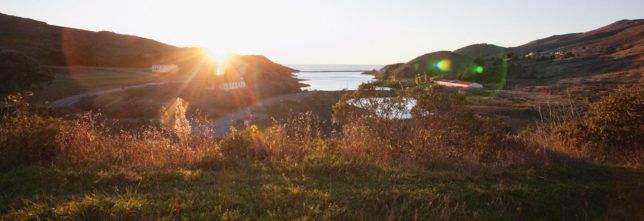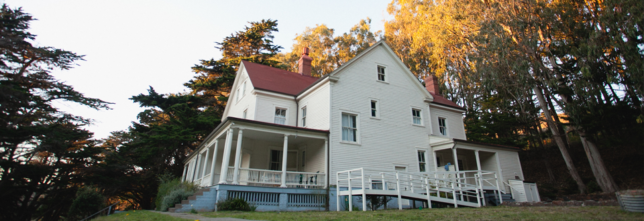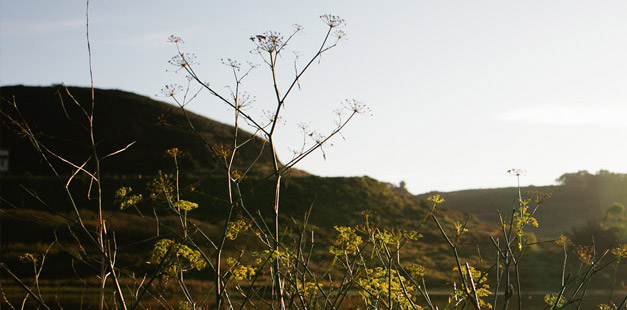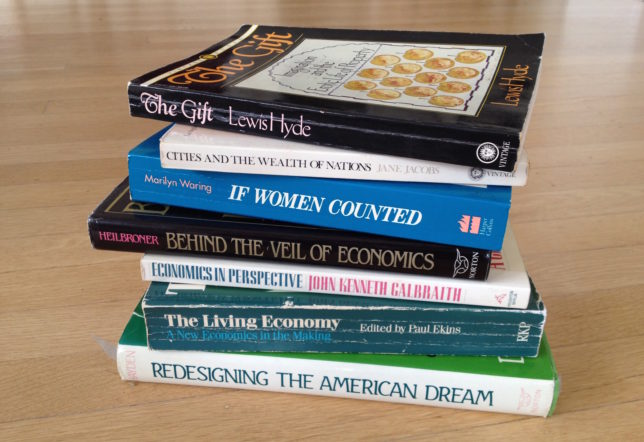
Notes from the Headlands, Artists and Economics
In August 1991, the Headlands Center for the Arts1 gave me a room, a food stipend, and most importantly about a week and a half away from the constant demands of my office.
I arrived with the intention of mulling over questions of artists and economics that had been on my mind for several years. Many of my thoughts on the subject had been prompted by specific writers, and at the Headlands I took time to re-introduce myself to their work. I carried a pile of books with me and used a computer that was considered “portable” in its day. I lived and worked in one room of a big house full of other artists on their own journeys.

Every day I took at least one long walk, to Rodeo Lagoon and the ocean beach on the other side of the sand bar, or up and over the low windswept hills, past cliffs and coves, decommissioned officers’ quarters and sites of former military installations, to views of San Francisco across the bay. I especially loved the smell of the head-high wild fennel.

But except for the walks and time out to prepare my meals, I buried myself in the books, mostly resisting the temptation to join the other artists in community-oriented activities. Every day of reading and writing was precious.
The books I took with me examined economics from a range of perspectives. They included: Cities and the Wealth of Nations (1985) by Jane Jacobs, The Gift: Imagination and the Erotic Life of Property (1983) by Lewis Hyde; Redesigning the American Dream: The Future of Housing, Work, and Family Life (1984) by Dolores Hayden; If Women Counted: A New Feminist Economics (1988) by Marilyn Waring; an anthology edited by Paul Ekins, The Living Economy: A New Economics in the Making (1986); a short book, Behind the Veil of Economics: Essays in the Worldly Philosophy (1989) by Robert L. Heilbroner; and Economics in Perspective: A Critical History (1987) by John Kenneth Galbraith. Because I was intent on exploring ideas about artists and economics not just by writing but also by finding ways to take action in my own life, I also used a few experiences from my own life.

I recorded my engagement with these writers’ ideas in a paper, Artists and Economics: Notes from the Headlands, that contains short excerpts from their writing, paraphrases of their ideas, and some of my own thoughts, especially about artists and economics, that the writers provoked. The first book I considered was Cities and the Wealth of Nations by Jane Jacobs. That section is posted on this site as “Jane Jacobs – Economics and messy inefficiencies.”
The paper remained open-ended and, for 10 days’ work, it felt finished enough. At the end of my time there, I made a few copies and presented them to a small group of artists and others at a gathering organized by the Center.
All in all, it was a very satisfying time away.
««««««•»»»»»»
1 Headlands Center for the Arts offers residencies and other programs to artists in all disciplines to support independent and collaborative work. The Center took over the property in the early 1980s and since then has rehabilitated its historic buildings through artists’ commissions. Much has happened since I was there.
About the photos. In 1991 I didn’t carry a camera in my pocket as I do now (that is, my phone), so I have no images of the Headlands that I took myself. I’m grateful to the website of the Headlands Center for the Arts for the photos here. Even though taken several decades later, they bring back the spirit of the place I experienced.
![]()